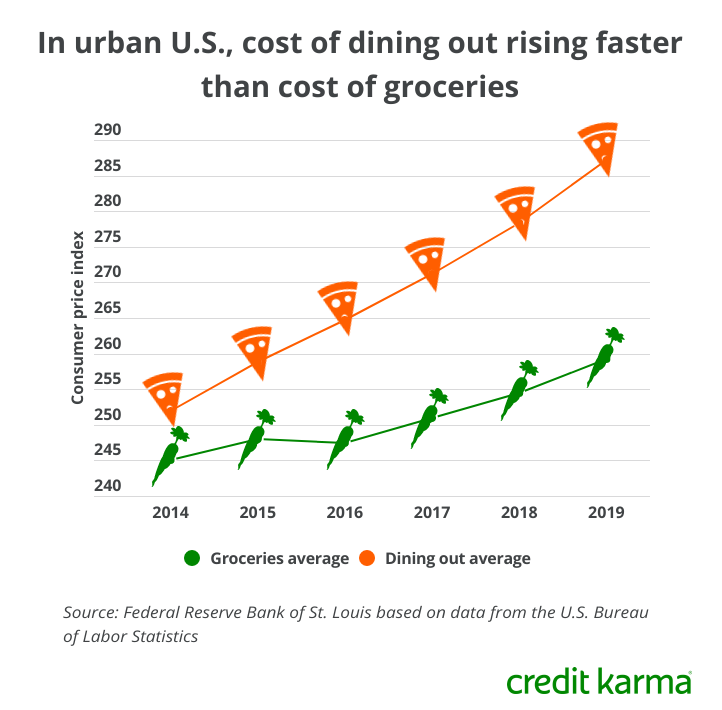Many of us set goals at the start of a year to do things like save more money or eat healthier. But studies — and experience — show that it’s tough to stick to New Year’s resolutions.
Making a conscious effort to buy groceries instead of eating out could be an effective way to both save money and eat healthier in the New Year, according to a blog post by the Federal Reserve Bank of St. Louis.
The U.S. Bureau of Labor Statistics uses the consumer price index to measure the average price people in urban areas pay for goods and services. Up until the early 2000s, the cost of eating out has run roughly parallel with the cost of food eaten at home. But about 10 years ago, those two metrics began to diverge. Overall from around 2008 until 2019, the index rose at a faster rate for food and drink purchased in restaurants than food purchased to be cooked and eaten at home.
To see the difference in costs according to the consumer price index, check out the chart below.

How can you adjust your spending and eating habits?
If you have a New Year’s resolution to save more and are trying to dine out less, we’ve got some tips to help you stay on track.
- Make a budget. The first step to saving money is figuring out how much money you have coming in and going out each month. Then you can try a plan like the 50-30-20 method, where 30% of your budget can go toward “wants.” If one of those “wants” is dining out, account for it in your budget. That way you know ahead of time how often you can splurge on a meal out and how often you should be cooking at home instead.
- Try “No Dining Out” January. You might have heard of Dry January, a trend where people don’t drink alcohol for the month. But you can do this with anything you’re trying to cut back on. So if you’re trying to reduce your restaurant spending for the whole year, think about setting a period of time where you don’t eat out at all and cook at home instead. You may find you don’t miss restaurants as much as you thought.
- Make a grocery plan and stick to it. Meal planning before you go to the grocery store can save you the horror of that smelly thing lurking in the back of your fridge later. And besides saving you from rotten food, it can save your wallet and waistline. The USDA’s Choose My Plate website has recommended recipes for eating healthy foods on a budget broken down by things like total cost or food group.


